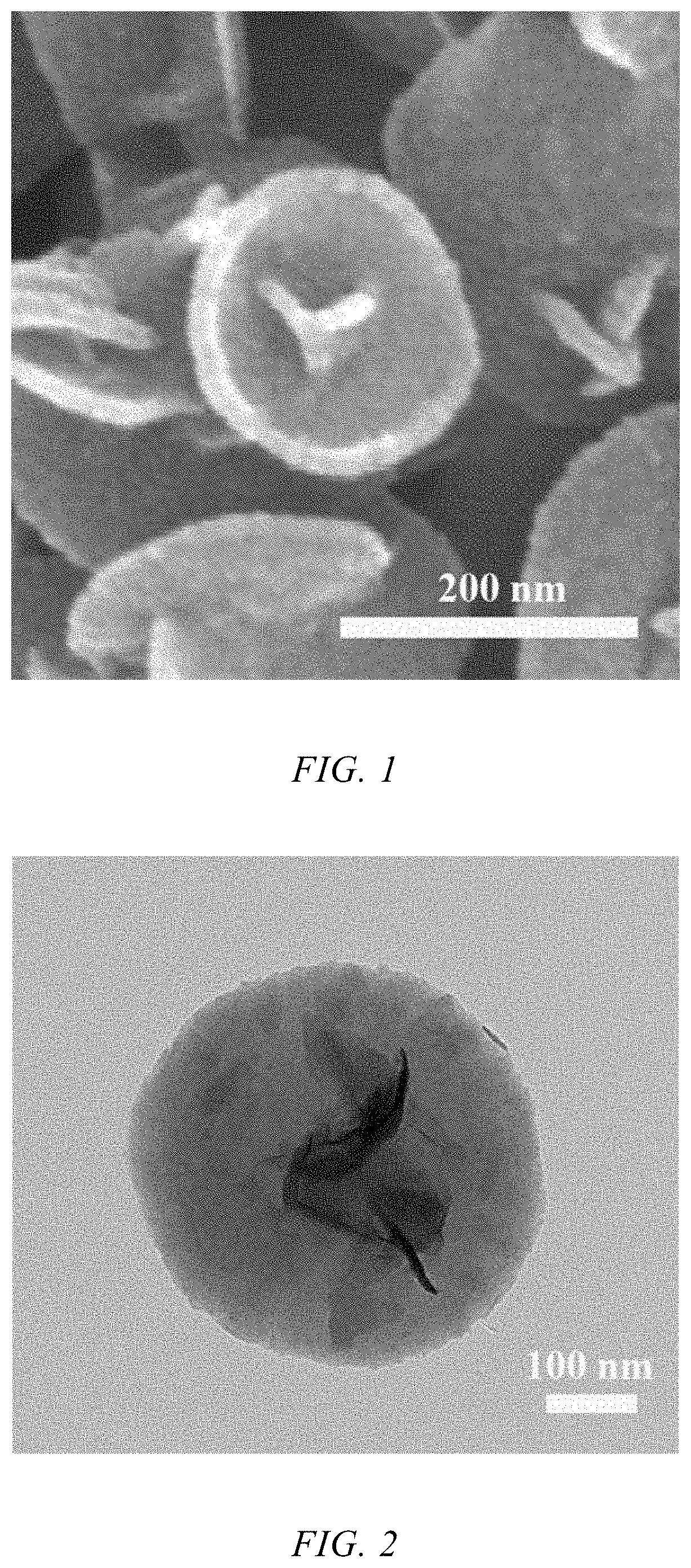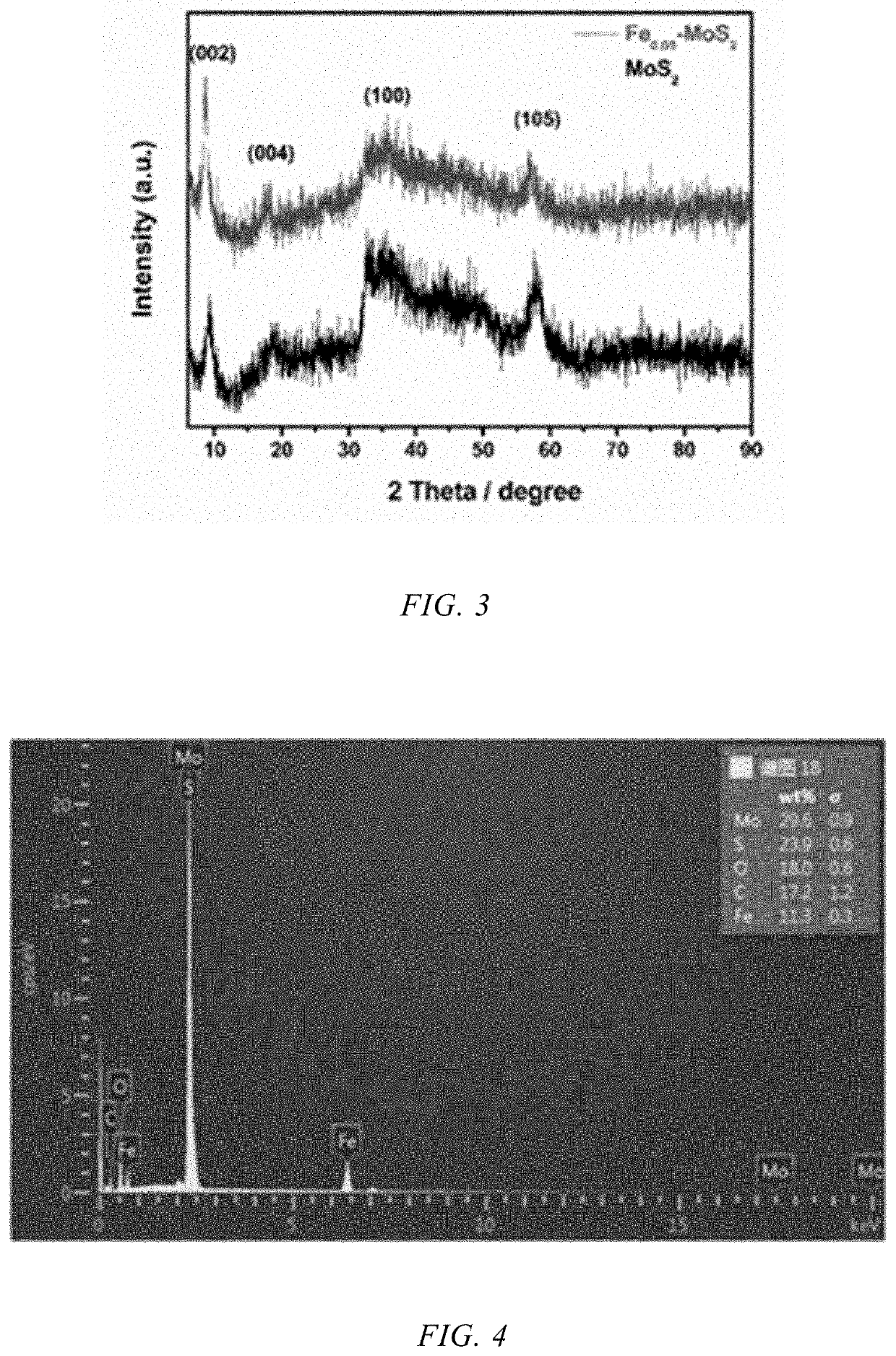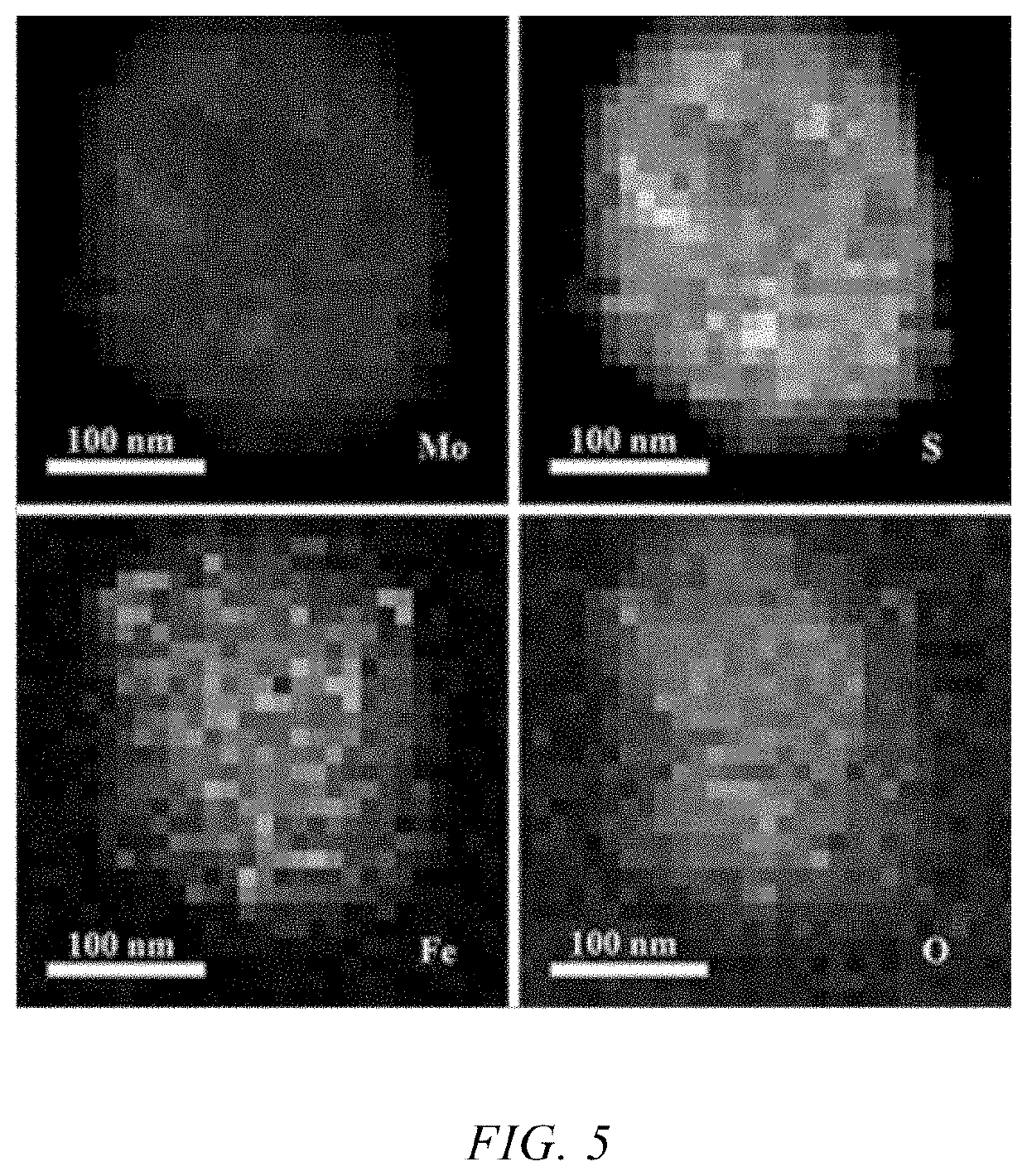Fe-doped mos2 nano-material, preparation method therefor and use thereof
a nano-material and mos2 technology, applied in the field of electrolyzed water catalytic materials, can solve the problems of limited large-scale applications in real life, limited catalytic performance in alkaline medium, and limited global warming and environmental pollution to human beings, etc., and achieves simple operation, easy cleaning, and clean surface
- Summary
- Abstract
- Description
- Claims
- Application Information
AI Technical Summary
Benefits of technology
Problems solved by technology
Method used
Image
Examples
example 1
on of Fe-Doped Molybdenum Disulfide Nanocanopies
[0037]13 mg (0.05 mmol) of ammonium tetrathiomolybdate and 13.5 mg (0.05 mmol) of ferric chloride hexahydrate solid were weighed and dissolved in 12 mL of N, N-dimethylformamide (DMF) to form a solution. The solution was then transferred to a Teflon-lined stainless autoclave. The kettle is then placed in an oven after being sealed and reacted at 200° C. for 12 hrs. After the reaction was completed, it was naturally cooled to room temperature. After being washed with deionized water and ethanol and subjected to centrifuging separation and drying process, black powdered Fe-doped molybdenum disulfide nanocanopies were obtained, named as Fe0.05-MoS2, wherein Fe represents iron ions and 0.05 represents the molar amount of the iron salt is 0.05 mmol, and MoS2 represents molybdenum disulfide.
[0038]As shown in FIG. 1 and FIG. 2, the Fe-doped molybdenum disulfide nanocanopies have a uniform morphology, as well as high quality and high yield, an...
example 2
on of a Fe-Doped Molybdenum Disulfide Nanocanopy Electrocatalyst
[0042]2.5 mg solid powder of the Fe-doped molybdenum disulfide nanocanopies and 2.5 mg of commercial available carbon black were weighed and mixed, then 970 μL of isopropanol and 30 μL of 5 wt. % Nafion solution were added, the resulting mixture was sonicated for 1 h so that it was uniformly dispersed to form an ink-like solution. 20 μL of the solution was added dropwise in batches onto the surface of the polished glassy carbon electrode, and then air-dried for later use.
[0043]As a control, 2.5 mg of the molybdenum disulfide solid powder and 2.5 mg of commercial available carbon black were weighed and mixed, then 970 μL of isopropanol and 30 μL of 5 wt. % Nafion solution were added, and the resulting mixture was sonicated for 1 h so that it was uniformly dispersed to form an ink-like solution. 20 μL of the solution was added dropwise in batches onto the surface of the polished glassy carbon electrode, and then air-dried...
example 3
rmance Test in an Acidic Electrolyte
[0045]The entire electrocatalytic test was performed under a standard three-electrode system, wherein the working electrode was the glassy carbon electrode prepared in Example 2, the reference electrode was an Ag / AgCl (saturated KCl solution) electrode, and the counter electrode was a platinum wire electrode. The electrolyte solution used for the linear scanning voltammetry (LSV) test is a 0.5M H2SO4 solution, with a potential scanning range of −0.7-0 V and a scanning speed of 5 mV / s. All the measured data was subjected to an iR-compensation.
[0046]As shown in FIG. 7, compared with pure molybdenum disulfide, the Fe-doped molybdenum disulfide nanocanopies show excellent HER electrocatalytic performance. At a current density of 10 mA·cm−2, the over-potential value is only 173 mV, and the Tafel slope is also as low as 41.1 mV·dec−1. The double-layer capacitance value is 39.8 mF·cm−2 and higher than molybdenum disulfide, which demonstrates that Fe0.05-...
PUM
| Property | Measurement | Unit |
|---|---|---|
| molar ratio | aaaaa | aaaaa |
| temperature | aaaaa | aaaaa |
| temperature | aaaaa | aaaaa |
Abstract
Description
Claims
Application Information
 Login to View More
Login to View More - R&D
- Intellectual Property
- Life Sciences
- Materials
- Tech Scout
- Unparalleled Data Quality
- Higher Quality Content
- 60% Fewer Hallucinations
Browse by: Latest US Patents, China's latest patents, Technical Efficacy Thesaurus, Application Domain, Technology Topic, Popular Technical Reports.
© 2025 PatSnap. All rights reserved.Legal|Privacy policy|Modern Slavery Act Transparency Statement|Sitemap|About US| Contact US: help@patsnap.com



